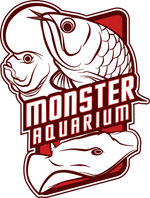The "Dorado" catfish, as described in your information, appears to be a specific species of large Amazonian catfish known for its distinctive characteristics and habitat requirements. Here are some key points about this catfish:
1. Size and Appearance: The Dorado catfish is one of the largest-growing Amazonian catfish species. It has a uniform metallic silver coloration and a streamlined, torpedo-like body shape, which enhances its hydrodynamic efficiency.
2. Habitat: In the wild, Dorado catfish are found in deep stretches of turbid, sediment-rich rivers and streams in the Amazon basin. They are adapted to these specific aquatic environments.
3. Feeding Behavior: Dorado catfish are known to be sensitive eaters in captivity. They may initially require live food to entice them to eat, but with time, they can be weaned onto frozen or prepared diets. Their sensitive barbels help them locate and catch prey in the wild.
4. Aquarium Requirements: Due to their large size and specific needs, Dorado catfish are suitable only for enormous custom aquariums or large indoor ponds. These environments should provide ample space for their growth and mimic the conditions of their natural habitat.
5. Water Quality: Like many other giant Amazonian catfish species, Dorado catfish are sensitive to water quality. They require substantial filtration and regular large water changes to maintain optimal water conditions in captivity.
6. Experienced Hobbyists: Keeping Dorado catfish is a challenging endeavor and is best suited for experienced, specialist aquarium hobbyists. These individuals should have the knowledge and resources to provide the necessary care for these fish over the long term.
7. Conservation: Depending on the specific species and region, some Amazonian catfish may face conservation concerns due to overfishing and habitat degradation. It's important for aquarists to ensure they are sourcing these fish responsibly and not contributing to their decline in the wild.
Overall, the Dorado catfish sounds like a fascinating and impressive species but requires specialized care and a significant commitment from experienced aquarium enthusiasts to thrive in captivity.




